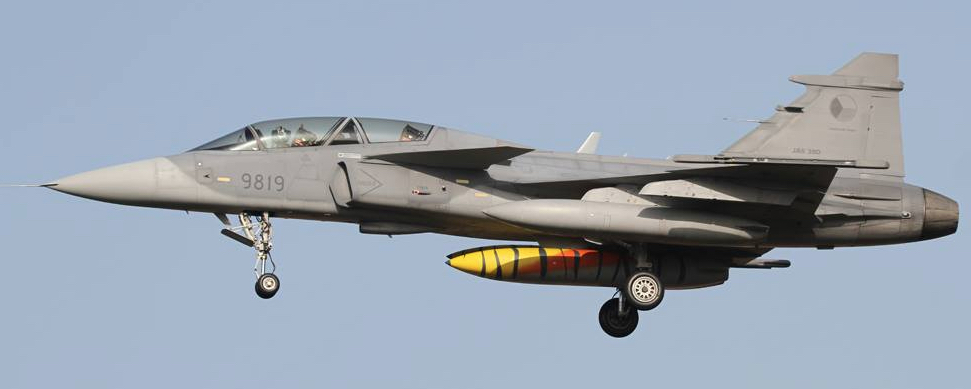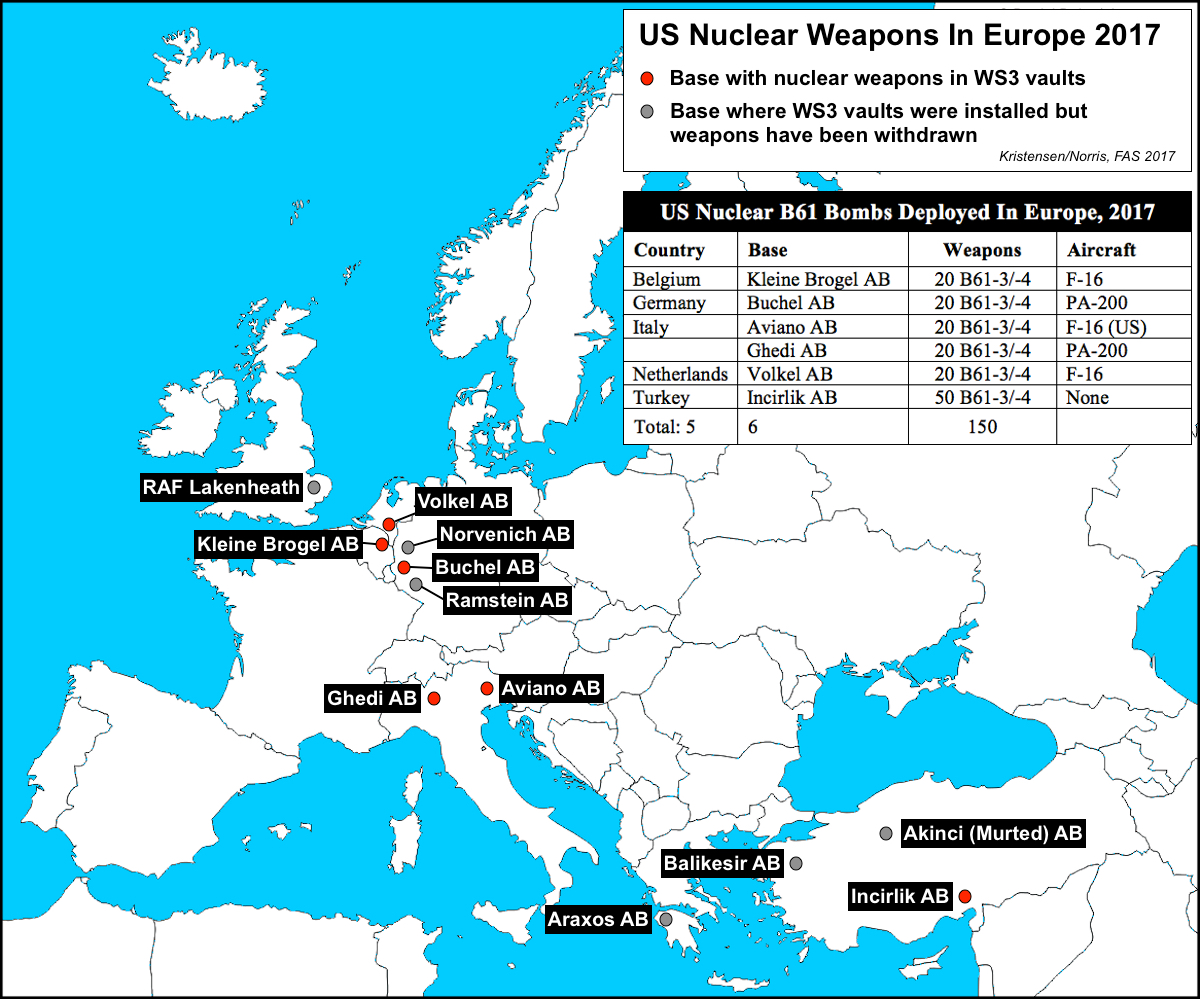NATO Nuclear Exercise Underway With Czech and Polish Participation

Image: https://www.facebook.com/lowapproach/posts/1468961693225121. Hat tip: Roel Stynen.
By Hans M. Kristensen
NATO reportedly has quietly started its annual Steadfast Noon nuclear strike exercise in Europe.
This is the exercise that practices NATO’s nuclear strike mission with dual-capable aircraft (DCA) and the B61 tactical nuclear bombs the US deploys in Europe.
In addition to nuclear-capable aircraft from Belgium, Germany, Italy and the Netherlands, local spotters have also seen Czech Gripens and Polish F-16s. The United States will likely also participate with either F-16s from Aviano AB in Italy or F-15Es from RAF Lakenheath in England.
The non-nuclear aircraft from Czech Republic and Poland are participating under NATO’s so-called SNOWCAT (Support of Nuclear Operations With Conventional Air Tactics) program, which is used to enable military assets from non-nuclear countries to support the nuclear strike mission without being formally part of it. Polish F-16s have participated several times before, including in the Steadfast Noon exercise held at Ghedi AB in Italy in 2010.
This year’s Steadfast Noon exercise is taking place at two locations: Kleine Brogel Air Base in Belgium and Buchel Air Base in Germany. Both bases store an estimated 20 US B61 nuclear bombs for use by the national air forces. This is the second year in a row that the exercise has been spread across two bases in two countries. Last year’s exercise was held at Kleine Brogel AB (Belgium) and Volkel AB (Netherlands). The multi-base Steadfast Noon exercises are often coinciding with or preceding/following other exercises such as Decisive North and Cold Igloo.
There are currently an estimated 150 B61 bombs deployed at six bases in five European countries (see figure below).
Weapons were previously also deployed at RAF Lakenheath but withdrawn sometime between 2004 and 2008. Weapons were also withdrawn from Araxos AB (Greece) in 2001. Consolidation (but not complete withdrawal) also happened in Germany and Turkey (for these earlier changes, see my report from 2005).
In addition to the countries with nuclear-capable aircraft – Belgium, Germany Italy, Netherlands, Turkey (note that the status of Turkey’s nuclear role is unclear, but it’s F-16s are still nuclear-capable), and the United States, there will likely be participation from other NATO countries under the SNOWCAT program.
NATO is adjusting its nuclear posture in reaction to the new adversarial relationship with Russia. The Trump administration’s Nuclear Posture Review is expected to reaffirm the continued deployment and modernization of US non-strategic nuclear weapons in Europe. But there is a push from hardliners inside NATO to increase the readiness and planning for the non-strategic aircraft. Others say it is not necessary. Last month several B-52 bombers forward-deployed to Europe in support of NATO and many see that as sufficient signaling at the nuclear level. Overall, moreover, NATO’s reaction to Russia is focused on providing non-nuclear defense to Europe.
In a broader context, the nuclear exercise has not been officially announced and NATO is very tight-lipped about it because of the political sensitivity of this mission in mainly western NATO countries. The secrecy of the exercise is interesting because NATO only a few weeks ago complained that Russia was not being transparent about its Zapad exercise. Seems like both sides could do better.
This publication was made possible by a grant from the Carnegie Corporation of New York, the New Land Foundation, and the Ploughshares Fund. The statements made and views expressed are solely the responsibility of the author.
While it is reasonable for governments to keep the most sensitive aspects of nuclear policies secret, the rights of their citizens to have access to general knowledge about these issues is equally valid so they may know about the consequences to themselves and their country.
Nearly one year after the Pentagon certified the Sentinel intercontinental ballistic missile program to continue after it incurred critical cost and schedule overruns, the new nuclear missile could once again be in trouble.
“The era of reductions in the number of nuclear weapons in the world, which had lasted since the end of the cold war, is coming to an end”
Without information, without factual information, you can’t act. You can’t relate to the world you live in. And so it’s super important for us to be able to monitor what’s happening around the world, analyze the material, and translate it into something that different audiences can understand.
